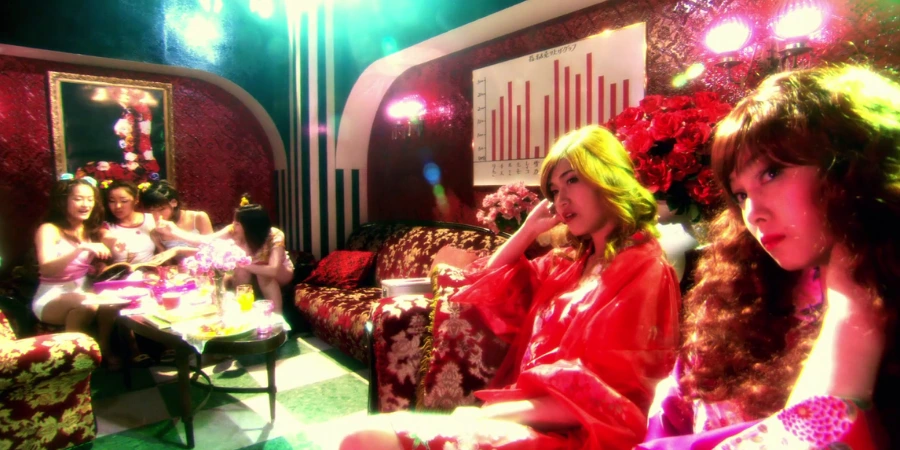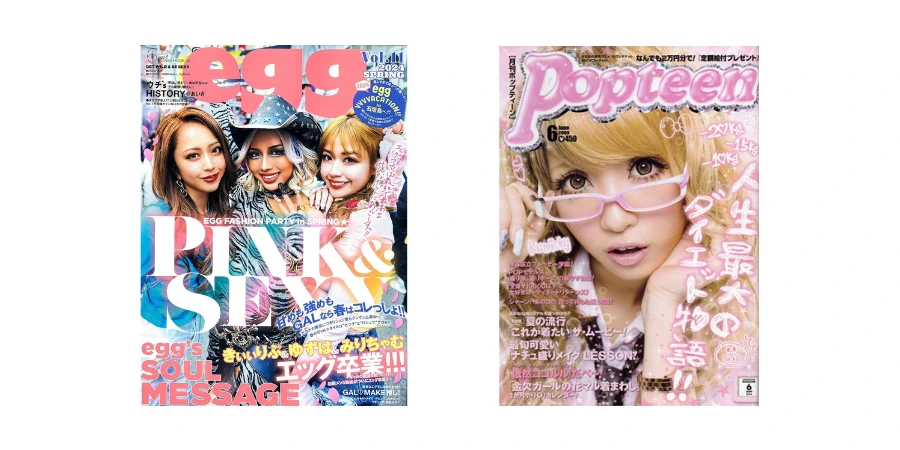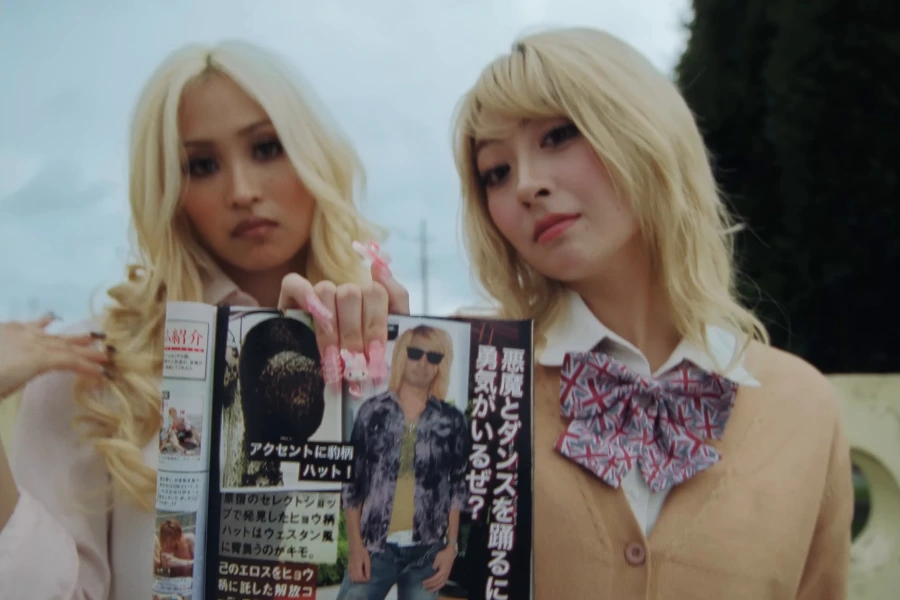🔖 4 min read
In your close-to-endless scrolling on Tiktok, you might have come across short videos of people donning both makeup and style so bold you have no choice but to watch. Coupled with creative nails, (often) blonde hair, and tans, the look inevitably catches attention. This is Gyaru, the caption would say. But, what exactly is it?
In the neon-lit streets of Tokyo’s Shibuya district, clusters of young women in eye-catching clothes, heavy makeup, and sun-kissed tans turn heads with their unapologetically glamorous style. They are “Gyaru” (ギャル)—a term derived from the English word “girl”—members of one of Japan’s most iconic and misunderstood fashion subcultures.
Its roots

Gyaru first emerged in the 1980s, in the midst of Japan’s economic boom. At its core was “Gal culture,” a rebellious spirit manifested through bold fashion choices. During this era, many sought ways to assert independence from rigid social expectations.
The idea behind Gyaru traces back to “bodikon” (short for “body-conscious”) style: tight, figure-hugging clothing that flaunted confidence rather than restraint. While traditional Japanese beauty ideals prized fair skin, demure behavior, and natural looks, Gyaru turned those expectations upside down. They embraced tanned skin, bleached hair, and flashy, Western-inspired clothing—an aesthetic some say was influenced by the American TV hit Baywatch, which was wildly popular in Japan at the time.
Interestingly, this rejection of conventional beauty standards has now gone full circle, making its way back to Western audiences. Social media platforms like TikTok have recently seen a revival of Gyaru aesthetics, with creators experimenting with the same bold makeup, over-the-top nails, and daring outfits that defined the movement.
Movement and lifestyle
For the young women in the subculture, Gyaru was a form of rebellion in the same manner that it was a fashion statement. By rejecting conventional ideals, they carved out a space where they could express independence and individuality. More than just looking sexy, it was about challenging the norms imposed on women and redefining what beauty could be.
The Gyaru lifestyle extended far beyond clothes. It came with its own slang, music preferences, and social hangouts. Magazines like Egg and Popteen served as cultural bibles, featuring style tips, interviews, and reader-submitted photos. Even the smallest details were important: elaborate nail art, sometimes embedded with rhinestones or charms, became a signature marker of a committed Gyaru.
At its peak in the late 1990s and early 2000s, Gyaru culture splintered into various substyles. Kogyaru featured high school girls with shortened uniforms, oversized sweaters, and iconic loose socks, embodying a playful, rebellious schoolgirl look. Ganguro, on the other hand, pushed boundaries even further with deep tans, bleached or neon-colored hair, and stark white makeup accents around the eyes and lips. These extreme variations drew fascination and controversy alike, often sensationalized in the media.
Backlash and misunderstanding
Despite its popularity, Gyaru faced significant pushback. Mainstream Japanese media often portrayed its members as unruly or morally questionable, framing their bold fashion choices as signs of rebellion gone too far. Critics claimed that Gyaru undermined traditional femininity and Japanese cultural values, especially in an era when women were still expected to be modest and subdued.
However, it is exactly this response that gives power to the style. It only reinforces that a status quo exists waiting to be subverted.
Today’s landscape

Photo Credit: Timeout Tokyo
In recent years, Gyaru culture has transformed. While the extreme looks of Ganguro have faded, modern Gyaru—or “neo-Gyaru”—incorporate more toned-down styles. Influencers blend Gyaru’s signature elements, like dramatic eyelashes and styled hair, with contemporary trends, creating a softer yet still distinct look. Shibuya 109 remains a hub for fashion-forward youth, though it now shares the spotlight with globalized fast-fashion brands and social media-driven microtrends.
The revival of Y2K fashion worldwide has also sparked renewed interest in Gyaru. TikTok creators experiment with the aesthetic, pairing low-rise jeans with flashy accessories and platform shoes reminiscent of the early 2000s. This digital resurgence highlights how the subculture’s rebellious nature continues to resonate, especially among young people looking for ways to stand out in an increasingly homogenized online world.
Despite these changes, Gyaru’s core spirit endures. It remains emblematic of defiance against restrictive norms and a celebration of individuality.
A lasting legacy
In a society often known for conformity, Gyaru’s impact is undeniable. Beyond clothes or makeup, it was about visibility in a world that preferred women to remain invisible. By breaking rules around appearance, behavior, and femininity, Gyaru paved the way for future generations of women to explore identity through fashion without fear.
As Tokyo’s streets continue to evolve and trends shift with each passing year, the bold imprint of Gyaru still lingers. Whether through TikTok revivals or nostalgic photo spreads, the subculture stands as a reminder of how something as simple as style can spark a cultural movement—and how, sometimes, rebellion can be beautiful.


AloJapan.com